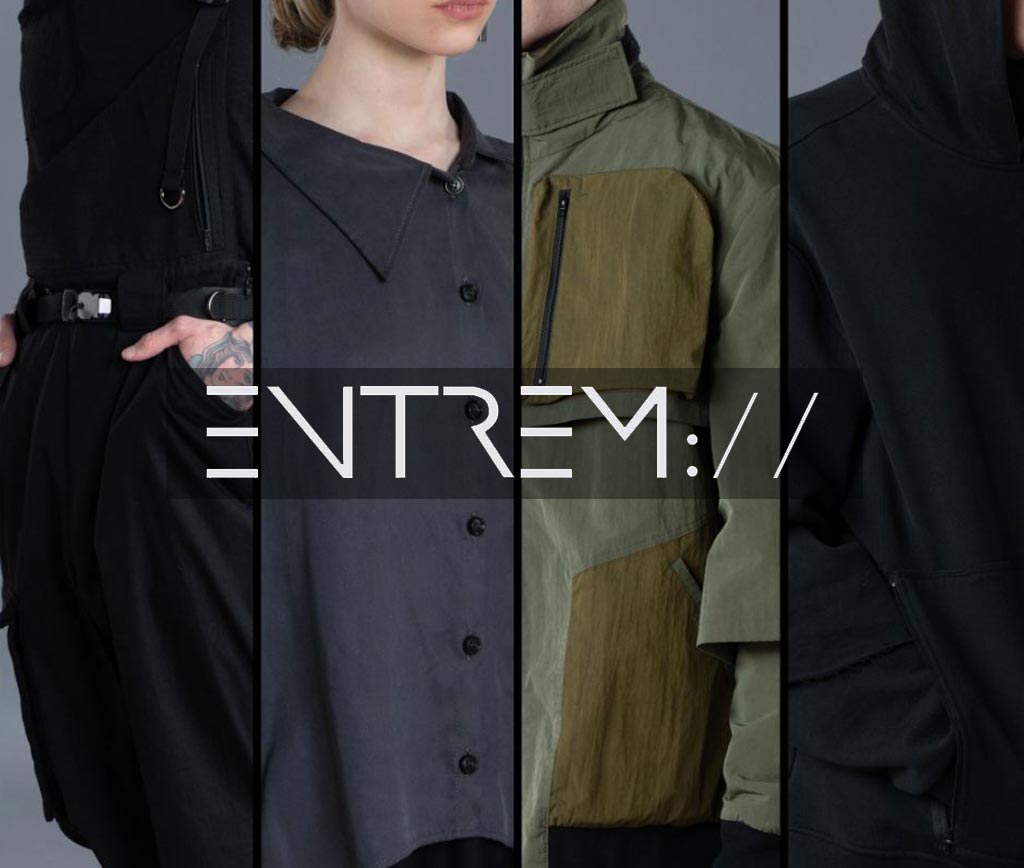BY: XEONIQ [ Instagram | Tumblr ] and Dylan Pritchard [ Store Website | Instagram ]
UPDATE: ENTREM has had it’s second release, titled: ALLOY 24. You can click here to jump directly to a preview of this new redirection of Dylan’s work as he takes a more workwear and Americana approach to garment design.
Contents
- Introduction
- Dylan Pritchard – Designer
- Developing the ENTREM Project
- The ENTREM Brand and e-Store Launch
- On ENTREM’s Business Model
- ENTREM Specific Product Impressions
Introduction
ENTREM is a design project by Dylan Pritchard that over the course of two years has emerged as a complete technical fashion brand with a range of garments and accessories that reflect Dylan’s creative and aesthetic ideologies. I’ve known Dylan for some years through the online techwear community and am proud to be able to present his work to Shell Zine’s readership.
One thing that I think can happen with new brands is that to consumer audiences, new brands can lack depth, and that is not a fault of the brand or their marketing, but more an issue with our expectations as consumers, where we demand some kind of entrenched narrative or the established, built-up subconscious emotion-laden imagery that we have grown to associate with a designer and their labels. With a new brand, like ENTREM, there’s a real possibility that someone would navigate to the site and just see a dozen or so products, not knowing who was behind the garments or where they came from; with established competitors appearing to offer “more” simply due to the aforementioned artificially cultivated brand narratives. In preparing this article with Dylan’s process and background as well as my own subjective response to the collection, I felt that some of this perceived “depth” could be provided.
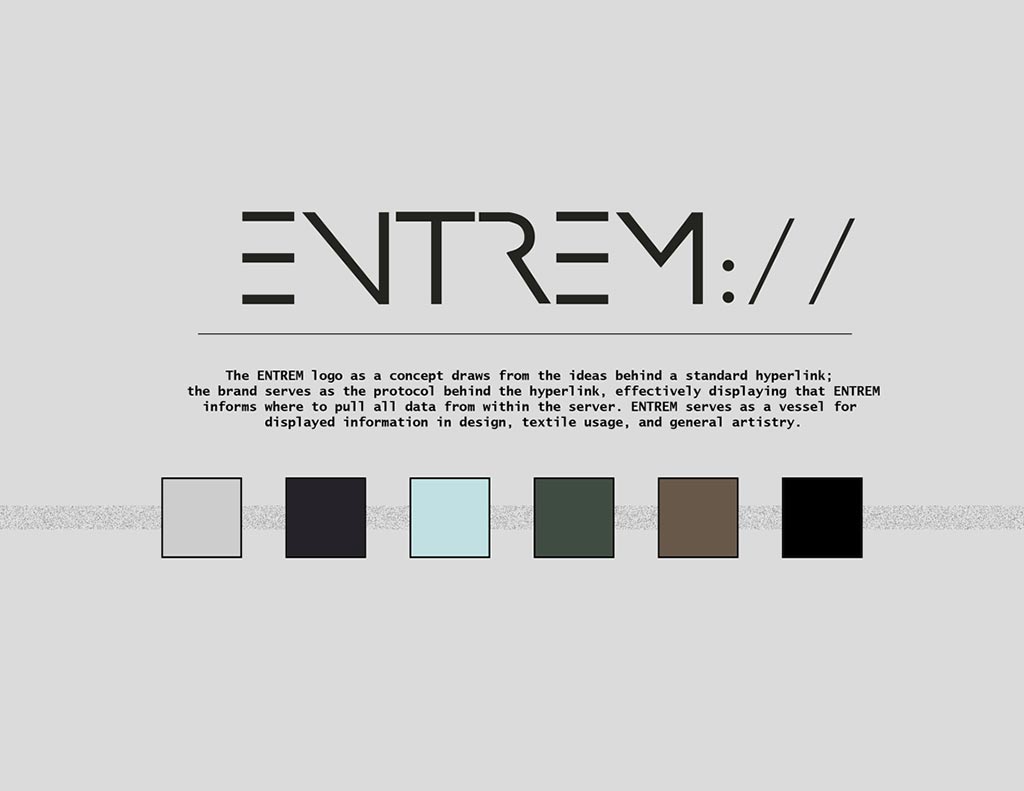
Like Suffi Zhang’s Call of the Valley project, ENTREM began as part of Dylan’s studies at an independent design school. One reason that I felt it would be worth sharing ENTREM on Shell Zine was that fashion students and other creatives could gain insight in how Dylan’s creative process worked as he laboured to create his own brand. Additionally, for those wishing to start their own businesses, in the fashion industry or otherwise, I thought it would be valuable to illustrate how Dylan transitioned ENTREM from a project to a business with marketable products.
As consumers we are always looking for something new, and while the postmodern condition seemingly demands all things between heaven and earth be attributed a label, Dylan has worked hard to create something that was inspiring to him and a reflection of his own personal creative journey. Ensuring diversity in the technical fashion market entails supporting emergent designers and brands so that they can sustain themselves to create new collections and products. If futurism as an aesthetic for the clothing we wear and style in our postmodern lives is to continue to evolve, we have to explore and recognise a variety of collections from different designers; not simply relying on hype-based releases from a small pool of streetwear brands.
This piece is written by XEONIQ and all opinions and subjective impressions of ENTREM are mine alone. However, Dylan has kindly provided significant information on his background and his engaged processes during the development of ENTREM. I’ve presented those along with a number of conceptual images he has shared. The quote function will be used for all of Dylan’s contributions. Following this, my own impressions of ENTREM as a brand and finally of a few products that I found stood out in particular will conclude the article.
Dylan Pritchard: About the Designer
Dylan Pritchard is a Philadelphia-based designer in his 20’s. A recent design school graduate, his final project was focused on creating his own futuristic fashion brand. A lifelong cyberpunk fan, Dylan’s been aesthetically inspired, as many of us have, by genre classics such as Akira and Ghost in the Shell. In particular, the anime series Cowboy Bebop strongly resonated with him.

One aspect of the techwear community I’ve always enjoyed has been the potential for grassroots if not DIY experimentation with clothing construction and modification. I feel like this phenomenon may be attributed to our shared aesthetic inspirations via cyberpunk and science fiction media, the ways that many streetwear brands over the last few decades have integrated military design details into casualwear, and the various technologies including social media that have enabled information sharing in fabrics, techniques and even styling trends (e.g. a preference for webbing belts). Seeing people like Dylan take this a step further with formal design school training to create his own brand for entry into the market that techwear fans may consume and wear is an interesting development; and again something I have not seen in as great a frequency in other fashion communities online. Dylan’s generation, the media he’s consumed, the communities he has interacted in and been a part of online, he is an enthusiast like the rest of us and for that I think his foray into running his own fashion brand is of note to consider.
Part of what I like reflecting on and writing for Shell Zine is modern consumerism. I feel that Dylan’s work on ENTREM represents something very modern; with his own transition from a consumer of media and clothes to an amateur stylist and artist who shared photos of paintings he had done and of himself in outfits to finally now: a designer and business operator in charge of marketing and delivering clothes he has designed. Technology has enabled such opportunities to exist with free marketing and sub-culture formation on social media and advanced logistics infrastructures that allow us to create and send goods and services all over the world. This kind of individualised entrepreneurialism is refreshing to me after decades of large corporations spitting out mass-manufactured branded goods that are as much symbolic effigies of artificially constructed marketing values as they are garments we wear; poisoning the world with their excesses and mentally divorcing us from the products we are actually buying, in this case: clothes.
Developing the ENTREM Project
Since the time Dylan and I decided to work on this article together, he has been sending me content relating to ENTREM and his process in working on the project. I have curated and organised this content for this section of the article. All quoted responses are Dylan’s own words with images he created during the development of ENTREM.
We can start from the beginning. ENTREM began, as you know, as an idea to make accessories, belts, and so on as just a fun hobby project for me to fill my time with. It was very short lived, because after our conversation concerning raising awareness for the small brand I was trying to build, I had the realization that I could do much, much more.
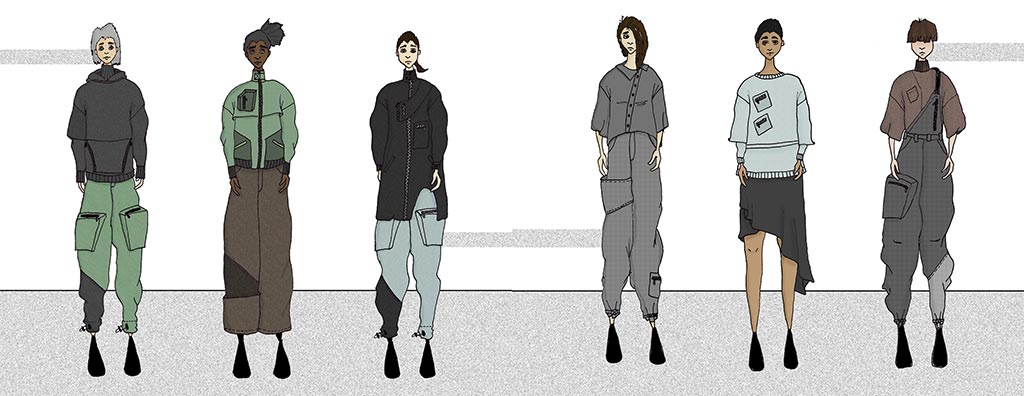
I would say I have a pretty extensive artistic past. A list of what I have either dabbled in or focused on for many years include: graphic design, video editing, photography, website and logo design, music recording and production, playing music across three different instruments, painting, and my own styles of illustration or mixed media art. As my interest in fashion grew exponentially over the past few years, so did my understanding of it as an art form. ENTREM, I think, is a culmination of a lot of my artistic experiences coming together into a modern project.
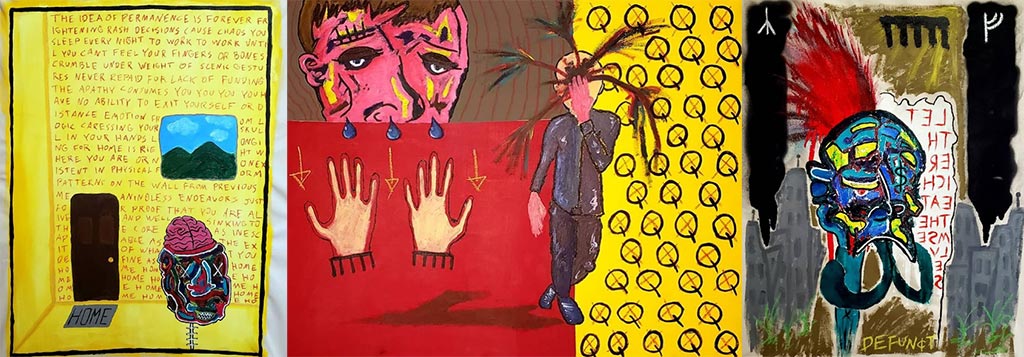
On the subject of technical clothing: for a long time now, and during the creation of this collection, I was thinking of ways to separate myself from the norm of general ‘techwear’, as I feel that terminology and overall scope of fashion can be somewhat limiting to the creative process. A lot of the textiles I choose to use have some sort of technical properties, however I don’t think that is the main focus. The art behind the clothing is the main focus. I’m constantly trying to bridge the gap between technical clothing and other forms of artistic fashion. While I know that some of my designs are derivative of the roots of military clothing or general futuristic wear, there are some designs that I feel almost cross into the luxury or higher fashion categories. In short, not everything has to be extremely technical all the time. I’m much more focused on creating artistically minded, future-forward designs.
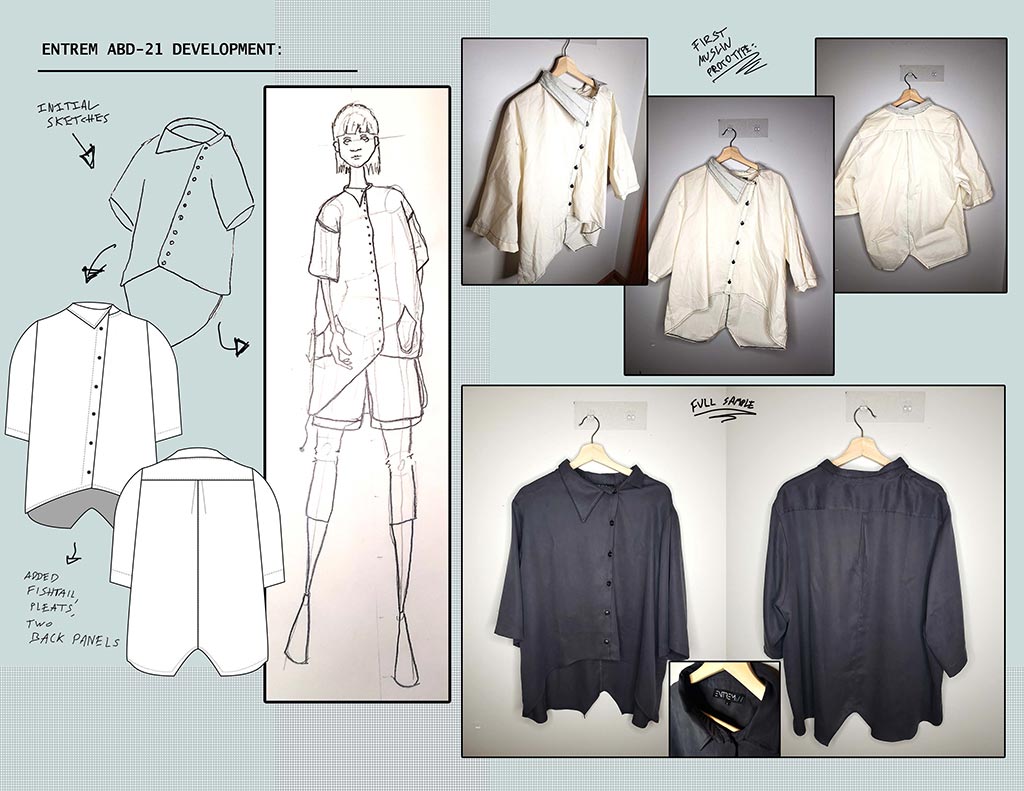
On Dylan’s design process:
I make everything from scratch. Essentially, I am a one person team. Moodboard, initial sketch, technical sketch, sourcing fabrics, pattern-making, cutting, muslin sampling, creating tech packs and spec sheets, and a lot of the time going back to the drawing board to work out issues or inconsistencies in the clothes.
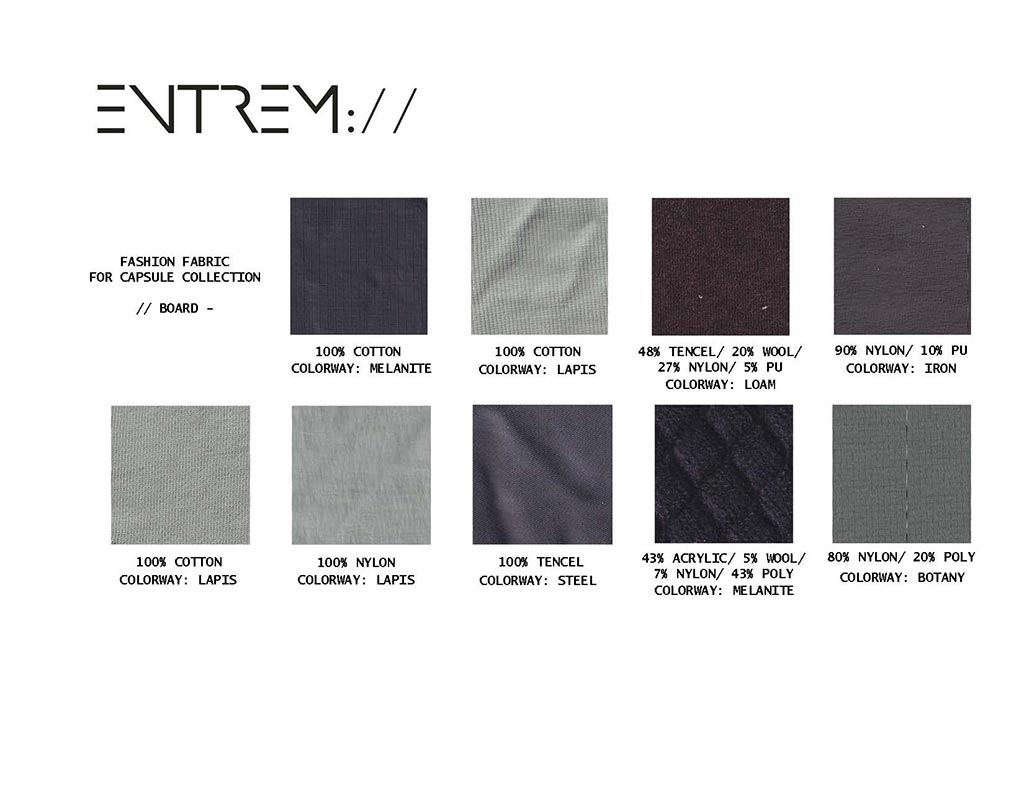
I physically create samples of everything the way I want it before sending it out to my factory in New York. They re-create my samples, which I then check for quality and specific details before confirming that a garment is complete. When it comes to design ideas, I think a lot of people like to start with a broad or general idea for a garment, and work their way inward to the details. This is interesting to me, because my mind works in the opposite direction. Normally, I have two thoughts for when it comes to a design: general silhouette, and extremely fine details. Those details could be as small or simple as a seam finish, a pocket angle, or just a particular shape that I find intriguing. I go from those small details and tend to work my way outward, fleshing out the rest of the garment design into the initial thought of the silhouette. Not sure if this is unorthodox or not, but it’s what keeps my creativity going. My process is very methodical as well – meaning if I can’t picture exactly how to construct something from start to finish, I probably won’t have any design ideas for it. On one hand, this may be limiting for the sake of creativity, but on the other hand, it means I know my garment designs inside and out. Every facet of the design is purposeful, in one way or another.
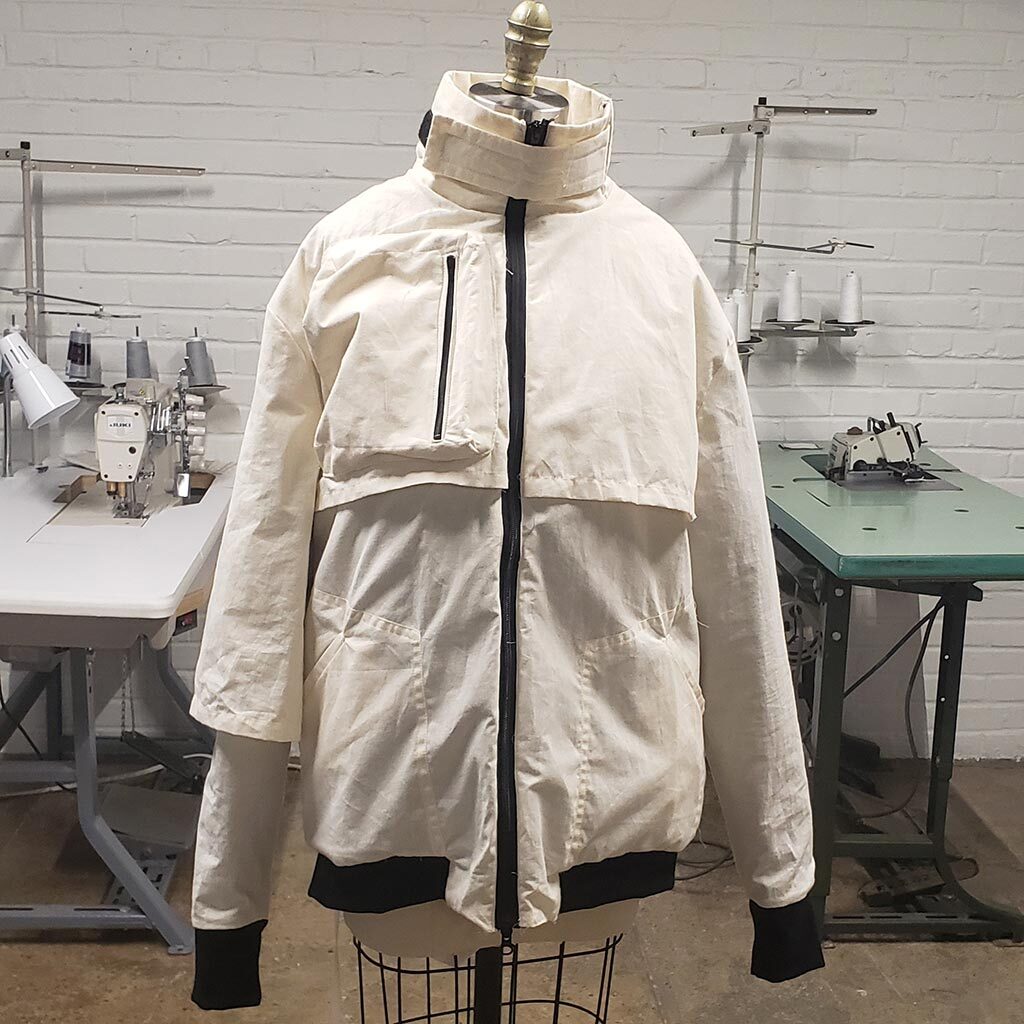
I learned most of what I know from going to an independent fashion school. Everything on the ENTREM website is the end result of about 18 months of straight perseverance, dedication, and hard work that the school either required of me through specific courses, or it was for the final graduation project of having a completed capsule collection. At the beginning of all of this as a concept, I barely knew how to sew two pieces of fabric together. So, understanding how to create all of the pieces you see on the website took a lot of studying as well as relentless physical practice. I never really think about it in this way, but I hope to set an example to other aspiring designers, and show that you can truly make something unique and special with a good work ethic. I think the pandemic really set me into motion in doing this the way that I have. There were some days during the creation of this collection that I would be sewing for anywhere from 12 to 13 hours straight because of the inability to go live life elsewhere. I realize not everyone can do this, but I have a pretty obsessive personality when it comes to creative projects. Needless to say, I learned a lot from going to school, and made plenty of connections that helped me to get where I am with this brand today.
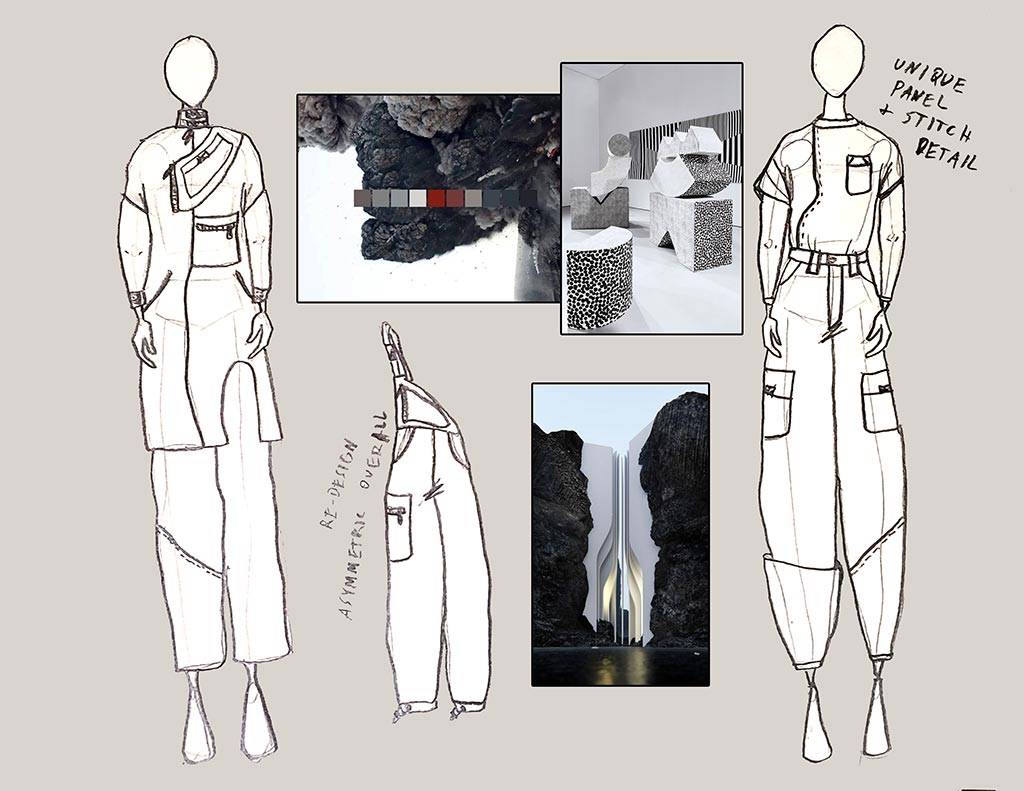
As far as inspiration goes, it varies a lot for me. I always get the question: What other designers do you look to for inspiration? The truth is, I don’t look at other designers for inspiration. Sure, there are designers that I absolutely love the work of, however I wouldn’t necessarily say that the designers themselves inspire me to create. I tend to look at other things. Architecture is one of those things that really makes me think about design details and gives me interesting thoughts about construction methods. Or, sometimes I’ll be fabric sourcing and come upon a particular texture that inspires me to create. Because the way I work is so methodical and almost mathematical, I find a lot of my creativity flows from seeing odd angles and shapes and wanting to imitate them in geometric garment design. Asymmetry in design always intrigues me as well, and shows up a lot in the details of my work. There’s something about finding a balance within asymmetry that is extremely visually gratifying. Rule of thirds perhaps?
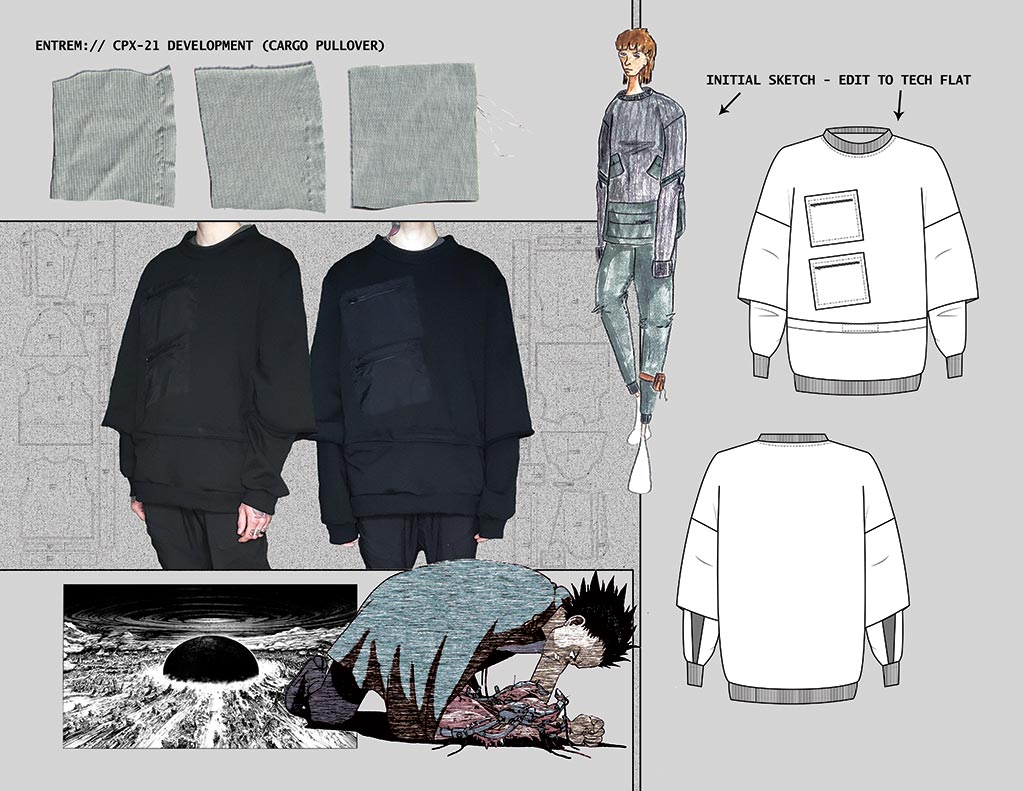
Along with the textural and architectural aspect of inspiration, there is the obvious first-hand visual inspiration of futurism. I think the main appeal of futuristic design in general is that it is both aspirational as well as attainable in modern society, with the past 20 years seeing a ridiculous boom of technological growth. These aspects of futurism give people something to look forward to; an enhancement of their current lives. There has always been something alluring to me about futurism, ever since I started watching sci-fi movies and TV shows as a child. As I got older and saw the more mature and gritty themes present in cyberpunk media, it attracted me even more. I believe my work will always have some tinge of cyberpunk aesthetics, no matter what I’m creating, because I will always be designing for that specific, aspirational future.

As you know, I have controlled every facet of this brand and its creations since I initially had the idea to make those small, simple accessories. In a period of 18 months I went from learning how to sew 2 pieces of fabric together to fully creating what you see on the website. Although I have professional factory workers (in the USA) creating the final products, everything goes through me, down to the specific seam finishes.

My process includes moodboard development, sketching (from thumbnail ideas to technical flats), sourcing fabrics, pattern-making, adjusting details, and cutting and sewing initial muslin samples. I then create all spec sheets and cutters musts for my factory for each garment, lay out all the details for them, and have them re-create my designs in the fashion fabrics as samples for me to review. I have gone through tons of samples and spent a significant amount of money thus far just on materials and labor. This was quite an undertaking, as I’m not extremely well off and have been living the student life-style for the past year and a half – working up to three part time jobs while constantly using my free time to create this collection/work on garment design. Needless to say, I have dumped a metric ton of time, money and energy into this brand, and I have loved every minute of it.
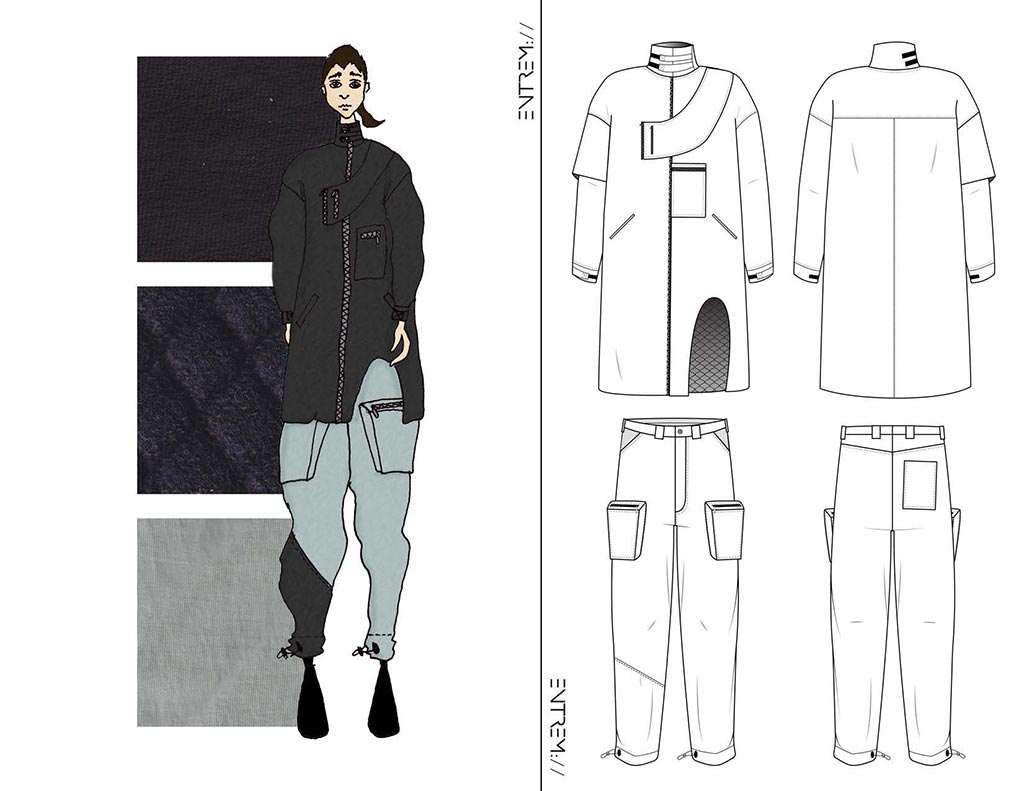
ENTREM Launch and e-Store
On February 11th, 2022 ENTREM launched with a webstore: entrem.us shipping final production pieces sold to customers that are made to order by a professional garment assembly workshop in the USA.
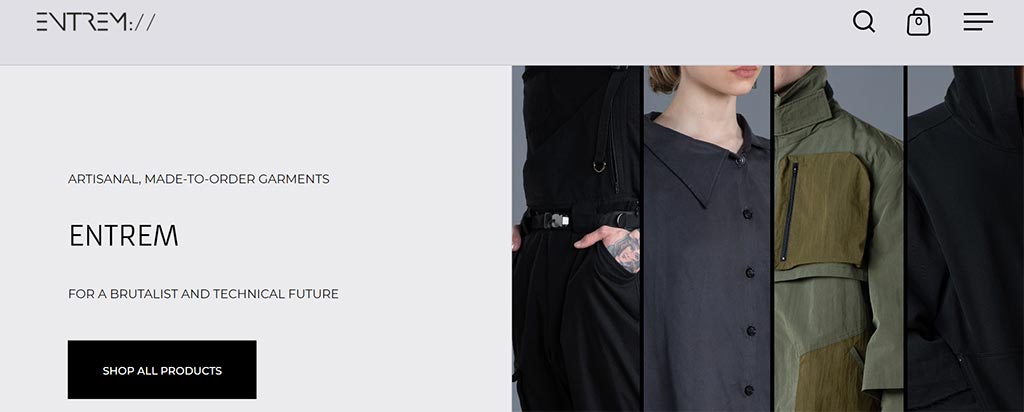
Made to Order (MTO) as a business model is something I am well familiar with as my partner owns and runs her own MTO business, which includes the futuristic label: ROSEN-X [ Webstore Link ]. Many of us who have become creatively productive in some capacity in the fashion industry have become disenfranchised with hyper-capitalistic consumerism that now defines the modern fashion and clothing industries. So-called Fear Of Missing Out (FOMO) marketing with artificially limited supply volumes, hypebeast and sneakerhead-derived brand tribalism being projected even on luxury brands like Louis Vuitton, and even at designer brand circles of distribution there are excessive volumes of clothing and waste being produced that has made us all too conscious of what role we play in this system as consumers. For many of us, MTO rejects these toxic elements of the industry with clothing that is made for each consumer specifically, maintains zero inventories and puts an end to a pricing model where goods are priced far over their necessary margin in order to be then sold later in the year on heavily marked-down price. In an industry where sustainability has become a marketing buzz word (so-called “green-washing”) MTO even with relatively inefficient processes per unit compared to factory productions, produces a fraction of the waste and emissions that mass production or even batch-made methods create. Additionally from a diversity perspective, MTO enables smaller players to sustainably compete in the marketplace without needing substantial investments to create and inventory a traditional fashion collection. This helps increase the number of designer perspectives and garments available to consumers. ENTREM as a MTO brand enjoys all of these practical benefits.
However, MTO as a model is not without its compromises for consumers. Sizing, as a customer, can be a daunting task and as you can’t simply return garments that were custom made for you if you didn’t like how it looked on you or fit, the perceived risk of buying is considerably heightened in a marketplace where most online retailers and brands accept no-questions asked returns. There is also a wait time between ordering and receiving the garment, however in the case of higher-end designer pieces like ENTREM offers, I don’t consider this as much of a drawback and if anything the anticipation of the order being produced and delivered specifically for the customer extends the enjoyment of the process. Many of us as seasoned consumers are burnt out and would love to re-capture the feeling of anticipation that is linked to receiving a long awaited item. With high-end designer garments, it’s hard to imagine a scenario where a jacket or pair of pants must arrive urgently for some practical need a customer might have, especially when most of us considering purchasing clothes from brands such as ENTREM already have considerable wardrobes on hand.
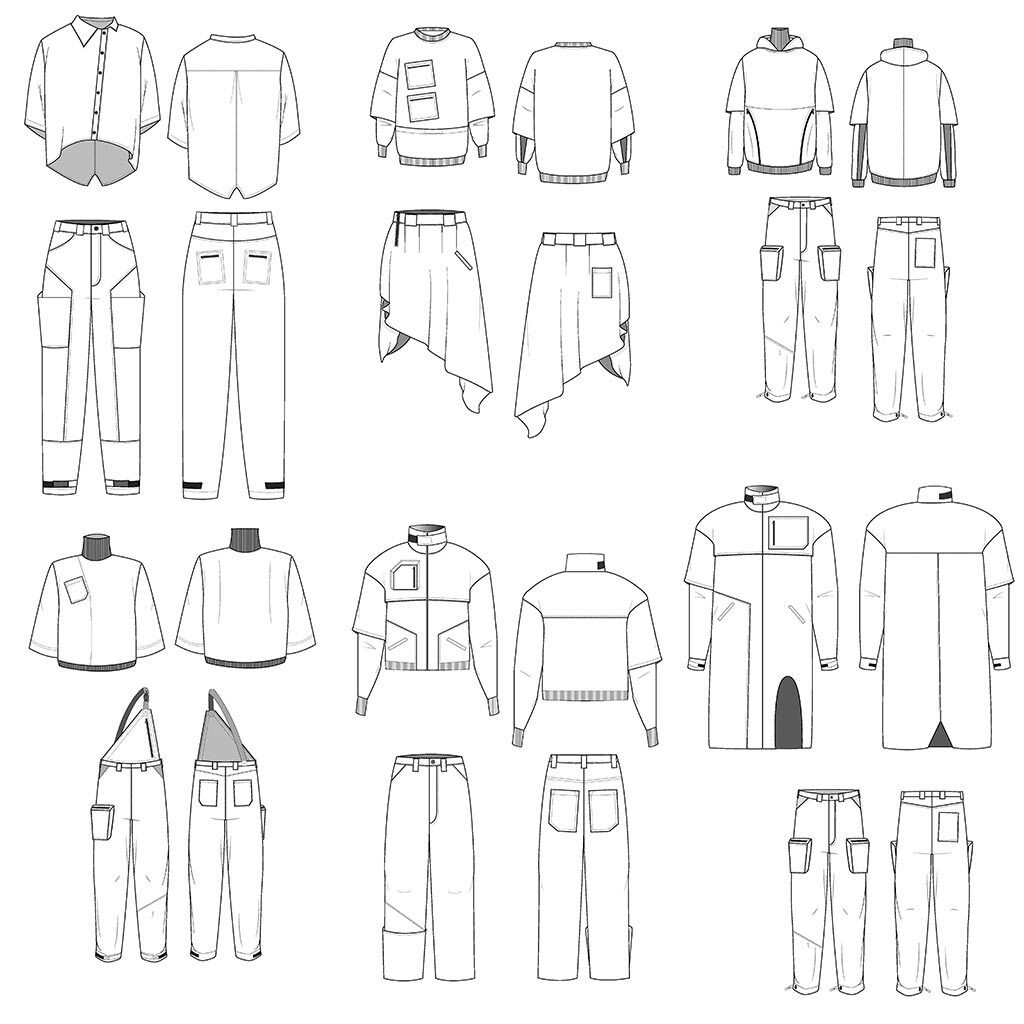
Another aspect of ENTREM that I appreciate, and I am sure many others do as well, is the distinct lack of exterior branding on any of the products. From a purely aesthetic standpoint when trying to create a personalised look that is unique to us as an individual, garments with prominent logos and branding heavily diminish the versatility of a piece to coordinate well with other clothes and accessories in outfits. For some, that desire can even become obsessive, and I can admit that I’ve seam ripped out many a logo patch or taken to them with black permanent markers in this endeavour for “cleaner” designs. In William Gibson’s Pattern Recognition, the protagonist Cayce Pollard’s own obsessive anti-logoism was written into the character as Cayce Pollard Units, or CPUs for short; something of a joke in the techwear community but which stands as a salient reality for many of us.
Further, from an ideological perspective, wearing branded luxury fashion almost feels insulting to me in 2022. As postmodern consumers we have grown up subjected to a lifetime of aggressive marketing from brands; and that even when we avoid such direct communications (with great difficulty), marketing nonetheless has managed to invade the minds of many of our peers and communities which become tainted by infantile brand tribalism. If we are paying designer prices for clothing, it feels like we should also be paying for the right to not be literally branded like cattle when we decide to wear our garments in outfits. The recent outcry by Veilance fans as that brand made the decision to begin emblazoning their once decoration-free garments with logos should be indicative that many, in the techwear circle at least, want logo-free clothing for their own wardrobes. ENTREM’s minimalism in that regard is a welcome aspect of the brand’s imagery.
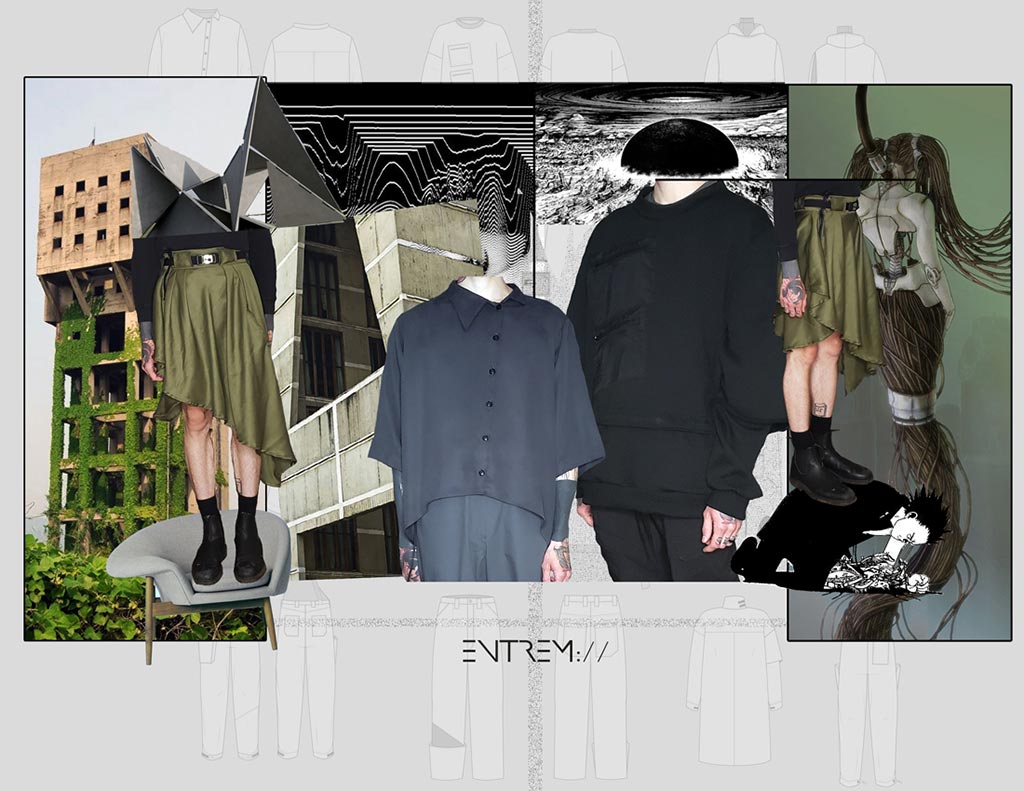
So while Dylan has provided us with significant depth to his product line to enable quite a number of complete ENTREM look combinations, the lack of overt branding on individual garments lets them be worn and coordinated easily with other designer products. As an emergent brand, an outfit comprised completely of ENTREM garments can provide a completely unique look for individuals with full head to toe coordinations from the first collection that are unique in so far as ENTREM is virtually unknown in its design language. But for those of us who take pride in collecting individual pieces that specifically resonate with us and styling them in completely unique ways to reflect our own tastes, brands like ENTREM offer a high level, refined alternative to the endless sea of FOMO hypebeast-branded streetwear that function more as tribalist signifiers than they do as aesthetic garments. In short, ENTREM’s designs can function as just simply cool clothes at face value.
Finally, my response to this first collection, at a purely superficial level, is that I like Dylan’s consistent use of asymmetry throughout the collection and his creative colour blocking details. The geometric patterning on most of the pieces reads very modernist and architectural, which I feel serves as almost a kind of urban “camouflage” when such garments are worn in built areas, blending into the lines of buildings and structures we may pass by.
On ENTREM’s Business Model
I also talked to Dylan about his business model and pricing structure and felt that parts of our conversation could be useful to readers who are considering items from the brand. I also feel this information is useful for those interested in making clothes or even starting their own brands. Quoted text are Dylan’s own words.
I wanted to provide full transparency to who all is doing what for this brand when it comes to the construction of the clothes. As you know, with a lot of brands and in general factory settings, there are dozens of garment workers that are often doing one particular seam or one task for most of the day, passing the garment off in assembly line fashion for the next person to do the next task. With the made-to-order business model, things are quite different and therefore I feel they can be much more personal to the wearer. There are essentially four people in total (including myself) that make this brand a possibility. There is one correspondent who oversees the projects, takes the orders, handles logistics and shipping, etc. Aside from that, there is only one cutter and one sewer. As stated before, all preliminary design work and sampling is done by me before I pass it off to my very small team who reconstructs my clothes in their final fabrics.
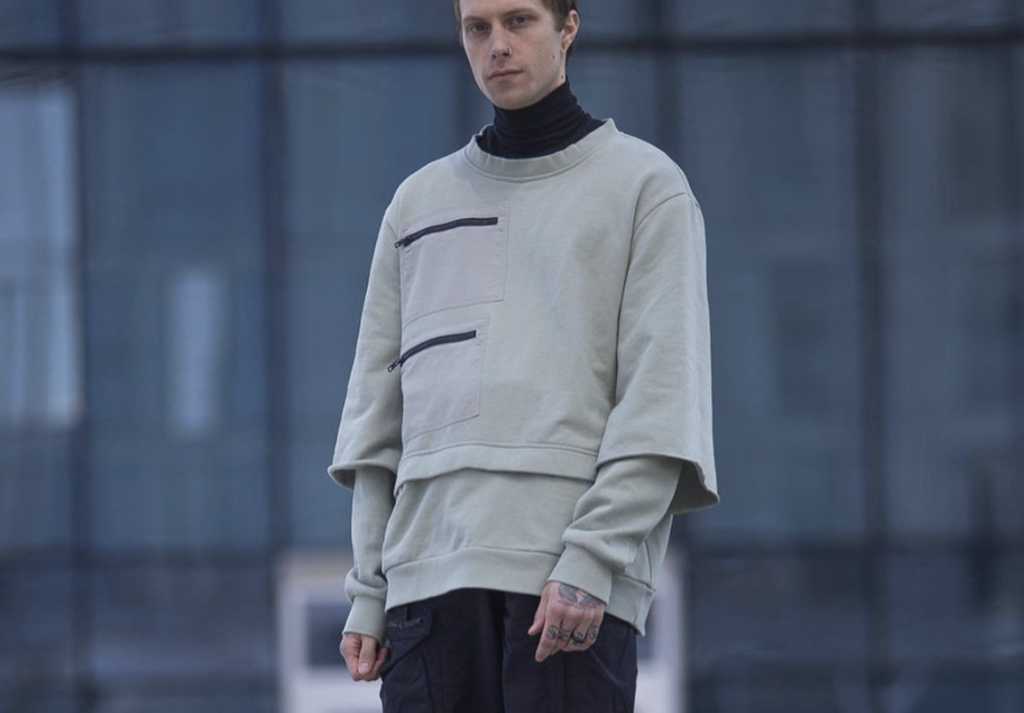
Unlike many factory-produced brand, most of the final garment’s price is attributed to the labor of the individuals who are crafting the clothes in a professional manner and executing everything to my design standards. There is also the cost of materials that are used which factor into the garment prices as well, as I source only very specific fabrics for this brand and oftentimes only order fabrics from my supplier on an as needed basis in small quantities. This cuts down a lot on unnecessary waste, however it means I’m not getting anything at cheap bulk prices. Fabric + labor = majority of costs, which are covered by the customer in the final price. As ENTREM is an emergent brand, the remaining margin as profits are invested into marketing and new product development so I can keep developing and growing as a designer.
Supporting ENTREM is supporting a simple but transparent production and supply chain as Dylan explores his aesthetic through technical fashion design. The garments are not made in sweat shops, they aren’t mass-produced creating huge waste. They are made to order for each customer and done so using a production method that affords American workers a good living wage. I am happy to endorse brands like this as an alternative to the endless stream of streetwear and fast fashion labels that market on hype, fear of missing out and where the profits go to the top rather than in supporting the actual hands that make the garments.
ENTREM Specific Product Impressions
I’d now like to discuss few of the notable products from ENTREM’s first release that I personally feel stand out.
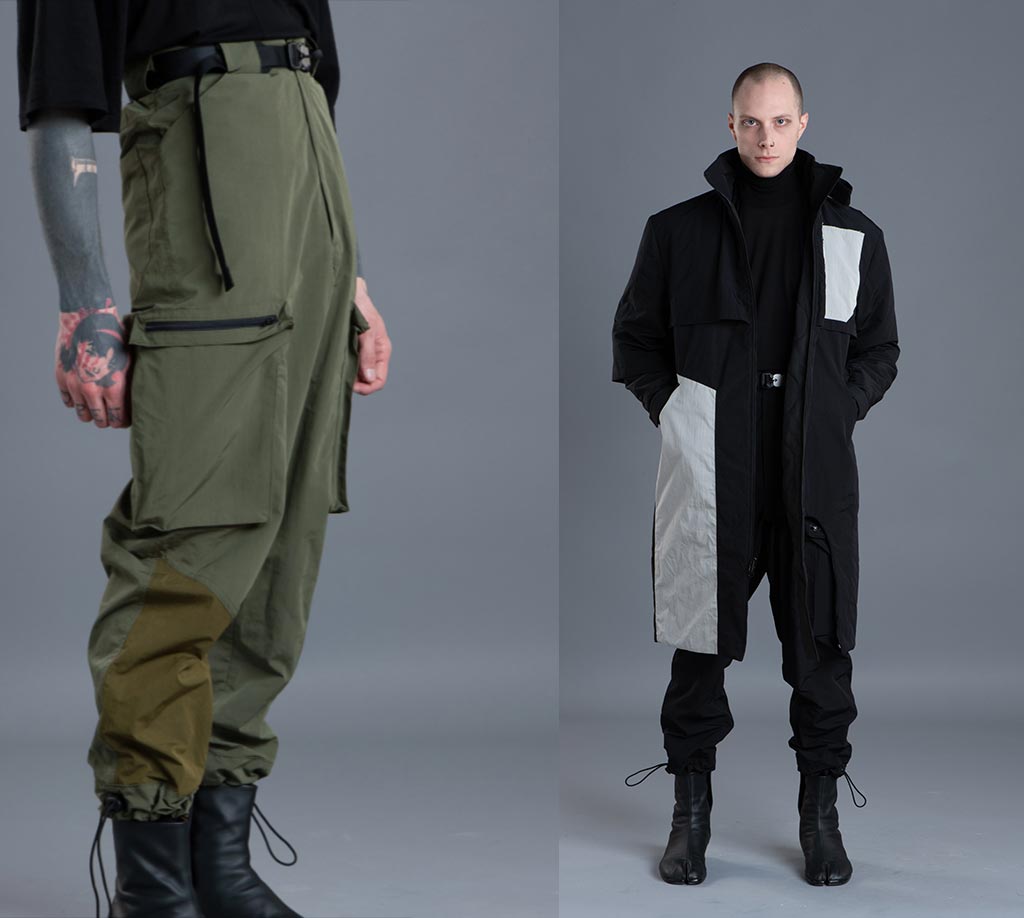
In my mind, the CCX-21 long jacket [web store link ] and the NPP-21 [web store link] represent the iconic ENTREM “look” in this first collection. Both pieces make use of colour blocking with geometric panels and are laden with technical details. The use of larger belt loops on NPP-21 is a good move as many in the techwear community use webbing belts with often bulky hardware that can be challenging to fit into standard belt loops commonly found on most casual and fashion trousers. One design element of CCX-21 that I found interesting was the cut out on the lower left hem. It’s arch shape supports the architectural aesthetic that Dylan has infused into his designs and its a novel feature in the market currently. As CCX-21 is quilted I find it less versatile as a layering piece, especially for those of us in warm climates, but the ripstop-treated nylon-blend used as a face fabric for both the jacket and the pants provides a sheen and rigidity that I’ve always been drawn to. Worn together, these pieces create a decidedly futuristic look, one you’d imagine on a protagonist (or villain) in a cyberpunk adventure.
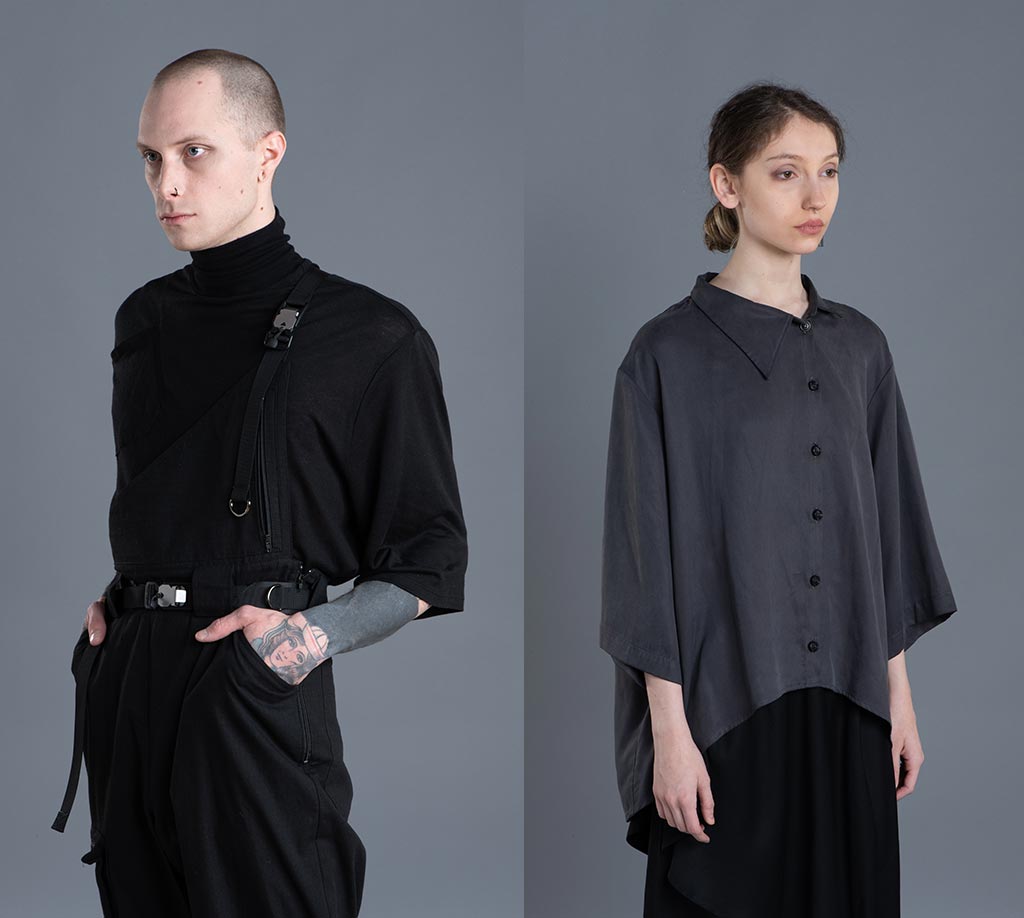
ENTREM’s tops are a strong point with this release for a number of reasons. Firstly, pieces like the WTN-21 [web store link] and the ABD-21 [web store link] are interesting modern garments by their own right. WTN-21 is a great idea for a futurist top because the turtle neck works very well when styled with the hoods and high collars that are strong stables of technical outerwear in the market. ABD-21 reminds me of some of the wonderful pieces in Tomoko Nakamichi’s Pattern Magic [Amazon link] book and its assymetrical cut, loose fit and beautiful tencel fabric (a pulp-derived form of rayon) have materialised as a unique and attractive shirt.
Secondly, the technical fashion/techwear market in general is saturated with jackets and tapered cargo pants, but for tops there is very little modern representation. A handful of brands do zippered shackets, there’s been a few tank tops in some not-so-practical technical materials, or just button shirts that really have nothing modern or technical about them aside from a neutral colour and made from a polyester textile. ENTREM’s futurist tops are a welcome addition to the market and I think are something that will sell well as there are very few good alternatives available from other brands. Further, when it is warm out, we often cannot layer much if at all, and having a top that still conveys an aspect of futurism to go with other technical accessories and pants is something that the techwear market needs more of.
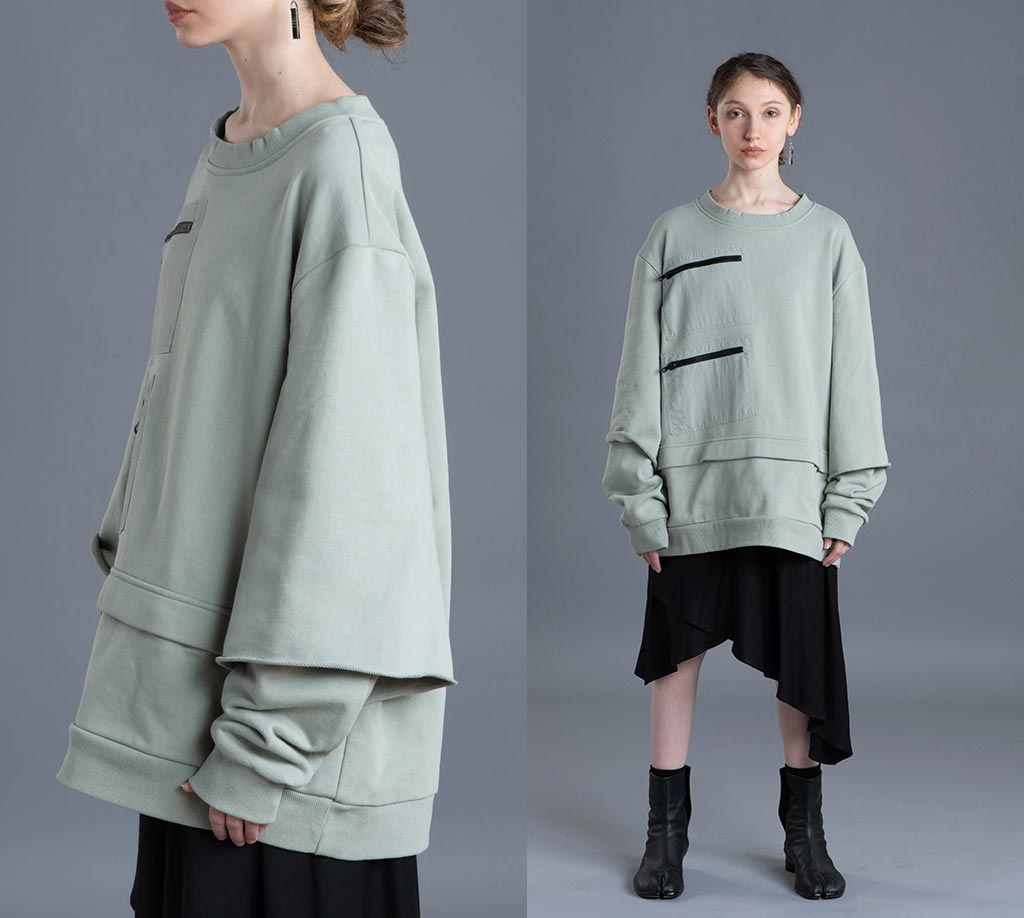
The last piece I’d like to talk about is the CPX-21 sweatshirt [web store link] which is, to me, one of the best items in ENTREM’s first collection. During the COVID-19 Pandemic many have been confined in their homes, unable to go outside, or at least have been working and studying completely remotely, online. There was little need for the kind of practical weather-resistance and outdoor-readiness that many techwear brands have based their quality on. I’ve long been interested in a designer response to creating futuristic, if not functional, clothing for a more comfortable-context: our homes. While an Abercrombie & Fitch sweatshirt or GAP hoodie are probably not the most futuristic of options, comfort is and should be prioritised over other features of a garment in that context. CPX-21 provides an excellent alternative for those with an interest in futuristic fashion that still want to be comfortable, at home or otherwise.
The CPX-21 is made A heavyweight 454GSM soft French Terry and features nylon overlay zip pockets, again showcasing ENTREM’s asymmetrical design language and providing some function to boot. The layered silhouettes while dramatic do not impact on wearability, which is important for a garment where comfort is key. While black is available, the LAPIS colourway is in my mind a more special colour, something not easy to find in a sweatshirt especially not one with such a futuristic design. I think Dylan has created something special with the CPX-21 and anticipate it to be one of his most popular designs from this first collection.
If you’d like to support Dylan so that he may continue creating more futuristic garments, his web store can be visited here: [Web Store LINK]
If you’d like to follow his brand on Instagram please click here: [ENTREM Instagram]
